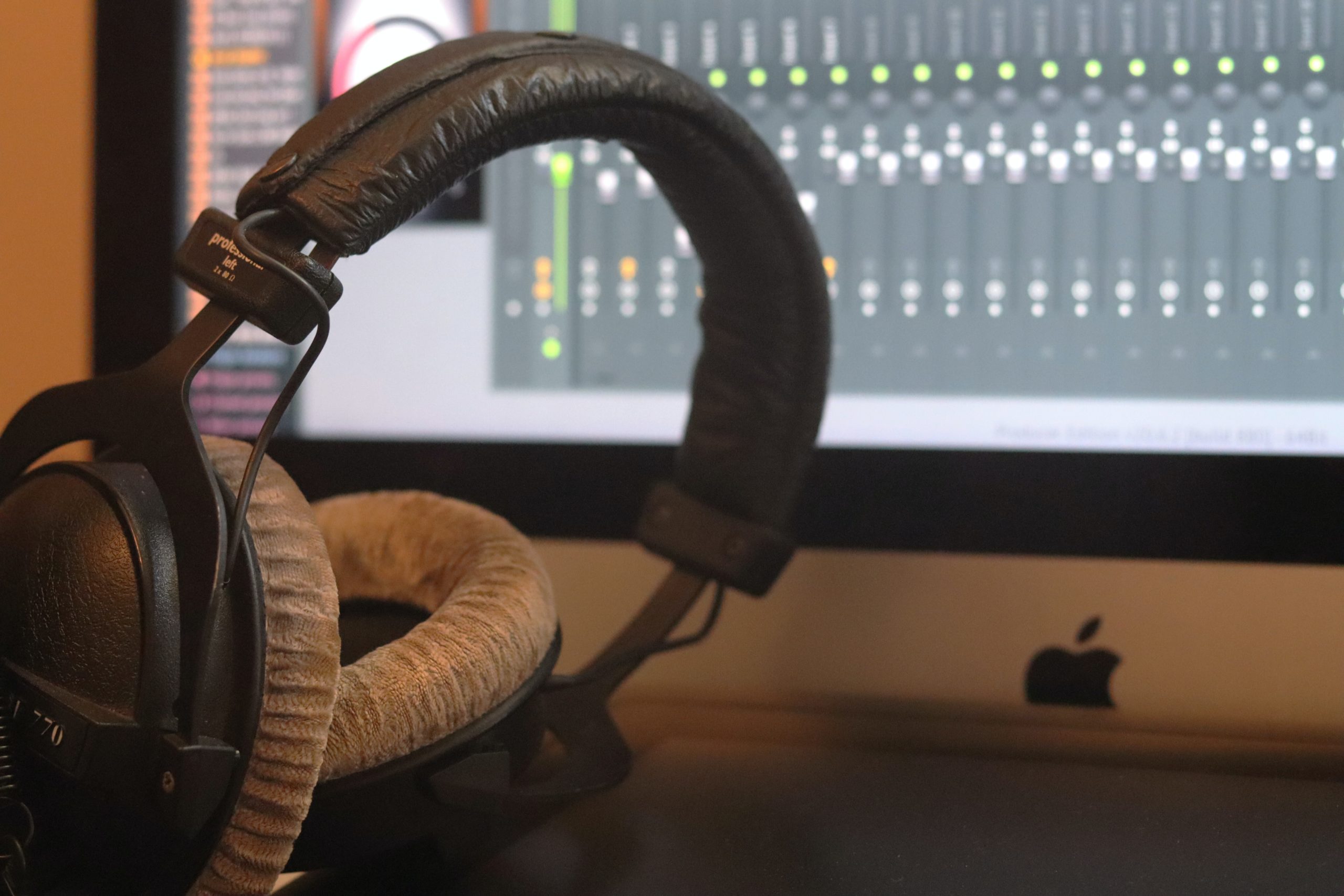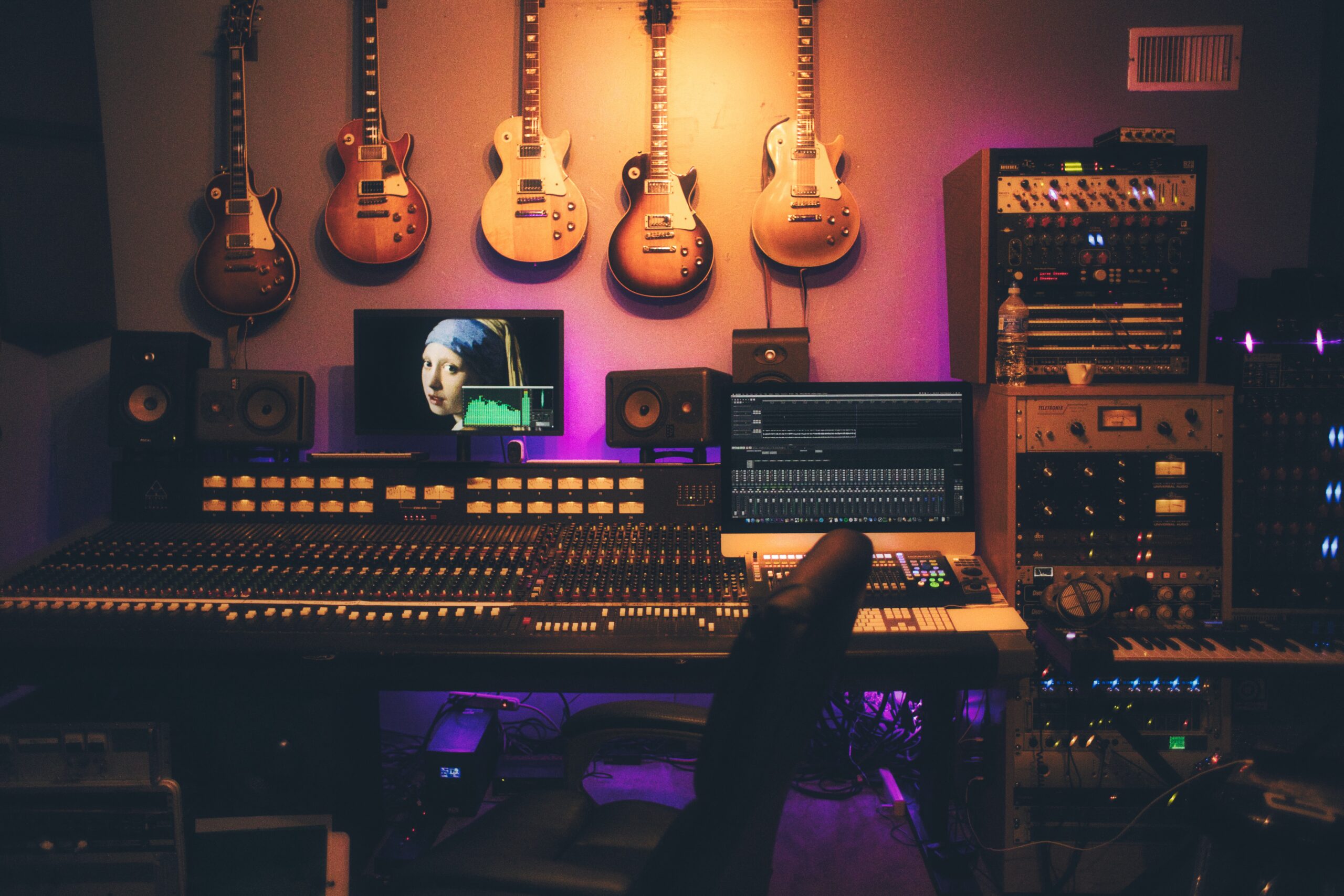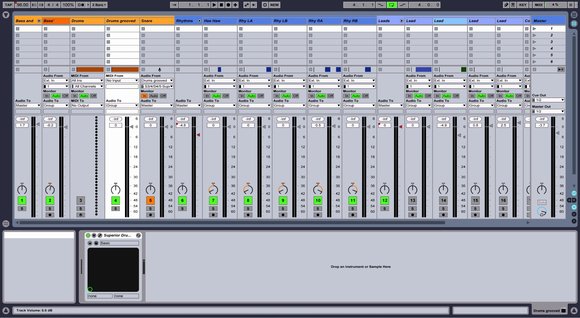By popular request, I am researching and collaborating with several of my peers to come up with a list of resources that can be useful post-graduation. Many of us were spoiled with the unlimited amount of software and gear that we had in undergrad. I certainly was! Now, six months after graduating from my undergrad program and three months away from starting my master’s program, I find this to be a great opportunity to explore my affordable options.
I would like to keep a few things in mind though. One, you do not need to break the bank. Affordability is something that was kept in mind when developing this list. Two, you should try to use what you are comfortable with. For example, I used Logic Pro during my undergrad. So I bought that and use it as my main workstation. This isn’t to discourage trying and learning new things though.
Ableton
I had to reach out to some friends who are ardent users of Ableton because I myself am not familiar with this DAW. Being downloadable for Mac and Windows, it is able to reach a wider customer audience. Ableton Live is free to try for 90 days and the intro version is only 99 dollars.
I was told by many of my peers that one of its best qualities is how fast it is when being used for producing. It is easy to use when searching for samples and organizing sounds. I mentioned before that Ableton has over two hundred different packs that include plugins, sounds, and software instruments. Several of them have a free download. Although, with only sixteen audio/midi tracks available, the awesome sounds and software instruments that Live Intro offers might not be able to utilize all the features to its fullest. The Standard version of Ableton Live has a steep price of 449 dollars.
Intro also includes many of the features that are included in the Standard and Suite versions. It doesn’t include some more advanced features such as extracting harmony parts, melody, and or drum parts from audio samples and converting them to midi. It also doesn’t support importing and exporting video files, which some DAW’s on this list can do. But again, at only 99 dollars and the lengthy list of features on its website, it does seem well worth it.
It is also being utilized as live playback for indie artists and rappers as well as in techno and house music. A space has been opened up for artists and musicians like this with live music becoming so much more digital with playback and triggering sounds that cannot be done during a live show. Artists like Tyler the Creator are even using Ableton Live, but that does not mean it is something out of the reach of the smaller indie bands. A friend of mine back home uses this same software for his band, Earl Grey. So producers, musicians, songwriters of all sorts can benefit the most from what Ableton Live has to offer. Whether you use it for live shows or solely production, this DAW has a lot to offer those who utilize it.
Logic Pro
I might be a bit more biased towards Logic Pro. It is the DAW that I regularly use. It can only be operated on MacOS, so windows users are out for this DAW.
The three universities that I have attended have all used Logic Pro, and for that I am most comfortable using this DAW. It comes with a decent amount of plugins. It is fairly straightforward, and because it is used by many, finding a youtube tutorial is relatively easy for me when I am in a pinch.
What I like most about Logic, is that it allows me to have a creative and consistent workflow. It is, in my opinion, one of the better DAW’s for design work. It comes with one of the most extensive and largest amount of plugins and sounds collections. Though, they will take up more space on your computer. It also offers some of the best mixer options, with a limit of 1000 stereo channel strips and the same for instrument and auxiliary tracks.
Logic Pro wouldn’t be my first choice when recording music though. It just isn’t as savvy as other DAW’s when it comes to editing and comping takes. Visually, it appears to be geared towards the creative and design workflow. When recording I find it a bit clunkier compared to Protools, especially when multi-tracking. I have also run into some issues with overloading and Logic crashing. It takes up a lot of space on my computer and having several hard drives and SSD’s at first is a necessity no matter what DAW you chose to use.
This is a great workstation for beginners and easily accessible to most since it comes with the purchase of any MacBook. It can be used for simpler projects or utilized for the more advanced. It is a DAW that can grow with you and still be able to meet your needs.
PreSonus Studio One
I reached out to the SoundGirls Facebook community in search of people who had used Studio One. Cierra Zimmerman was kind enough to share her opinions with me about this DAW. She has been using it for about five years.
Here is another Windows-friendly DAW to the many Windows users out there. Studio One is available for Windows and Mac. It requires a hefty amount of hard drive space for download but includes many great features. It allows for unlimited audio and instrument tracks, advanced automation features, and almost 40 different Native effects. I myself LOVE Native Instruments and their products.
Like other DAW’s that have been covered, Studio One also comes with an assortment of plugins, sample packs, and loops. I heard many positive opinions about these workstations’ affordability. There are several different options too. Prime being their free, but the limited option, Artist being a midrange option, and Professional being just under 300 dollars. When researching this product, Studio One Professional was on sale. It is a much cheaper option compared to Protools Ultimate’s monthly subscription of 80 dollars a month.
The con’s being there might be a slight learning curve for beginners and those new to Presonus. There were some comments about organization and workflow functionality being sloppy and cluttering. So if you are willing to work through and learn a slightly different software, this could be an option for you.
Many users said they use it for recording and producing and prefer it to Protools, mostly due to the price difference. So if you want similar options that Protools Standard and Ultimate offer, but can’t do the price, Studio One could be an option for you. It also has potential for those who do more creative and design work. With the good amount of stock virtual instruments, sounds, and plugins, it sounds like a great workhorse DAW for those who are looking to do it all.
Protools First
Without a doubt, Avid’s Protools is an extremely powerful software and it is favored by many. I find it easy for all things recording and mixing. Editing takes is a breeze. And what makes Protools First an excellent option for those on a budget, is the fact that it is a free download. You do need to set up an Avid account, but besides that the download is straightforward. Though at first glance Protools First might appear barebones, it does come with a good amount of plugin’s and track availability to start with. It comes with 23 Avid plugins, 16 available midi, instruments, and auxiliary tracks. It has a great organizational setup that allows for an uncomplicated workflow.
However, some beginners might find it a bit challenging compared to other DAW’s. In my experience; and from other people’s accounts; Protools will crash more often than other DAW’s. It takes up a lot of space and processing. The system requirements are somewhat strict compared to other workstations. It requires a minimum of 15 GB of disk space for installation. Whereas Logic requires a minimum of 6 GB. With Protools First, editing capabilities are limited. When comparing the different versions on the Avid website, Protools First is labeled as does not support video tracks and does not include advanced audio editing. It also has limited automation capabilities and does not support surround mixing. Some of these limitations are lifted with the Protools Standard version, which is only 30 dollars a month. Avid employs monthly subscriptions for its Protools software, which might also be something to consider when committing to this DAW.
I would like to emphasize the word limited in these product descriptions. Limited does not mean it does not include. And for someone on a budget, limited could be doable. It is important to examine your basic needs and what you can get by with for the time being. Protools is excellent software and is often considered the industry standard.
REAPER
Reaper has gained interest in the past few years. I have heard it talked about by many sound designers involved in the video game industry. It is another software that is compatible with Mac and Windows. Reaper has a free 60-day evaluation download and a 60 dollar personal license download after that 60 days. In my opinion, this DAW is the most bang for your buck.
It’s system requirements are fairly relaxed. On its website, they boast about it being a portable DAW that can be kept on a hard drive in your pocket. I have also read accounts of those who were able to download Reaper with only 4 GB of disk space available, though I might not recommend that.
It does not come with all the bells and whistles that Logic Pro or Studio One comes with, but again, it is a great option for things like recording, mixing, and editing. There are lots of free downloadable plugins that you can find. It can be used when working on film or video projects. It is remarkably light on processing power and the program launches almost instantly.
I have also used it for much more advanced purposes. I previously worked on a virtual reality video game where all the sounds needed to transition well into the virtual environment. I used the Ambisonics Tool Kit and it has a free download for Reaper users. It was a simple enough process of integrating it into Reaper, but there are some tutorials on Youtube that you can find if needed. Reaper does have the option for customizing your workstation, including plugin toolbars. When I used it, I experienced some headache when searching through the many different plugins. So if you are looking at Reaper to be your home DAW, I would highly recommend looking into this feature.
One of its taglines is that you can do anything with this DAW. Reaper is incredibly flexible and customizable. Lot’s of users involved in video games have developed their own codes and programs that can be used in conjunction with Reaper to allow for an even more efficient workflow. This workstation is unique because of that and for users who have a coding background, you might want to check out Reaper.
When on a budget, I think it is most important to access what you absolutely need your workstation to do and what you can live without. There are some really great options available to designers and engineers and these are some of the options that I have found and had the opportunity to talk to others about. I am sure there are other DAW’s out there that could be used. I hope that this was helpful to readers and special thanks to all of those who I got to talk with about their favorite workstations. Your thoughts and opinions were important.
Special thanks to Zakk Burke, Chase Cloutier, Mark Heinonen, David Peterson, Charles Southward, Drew Stockero, Cierra Zimmerman


